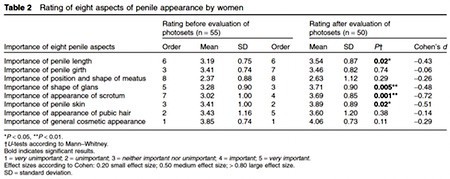Marc Abrahams's Blog, page 317
July 22, 2015
Snotbot, the whale snot-collecting drone, builds on Ig Nobel Prize-winning research
Snotbot, a project to make drones that will collect whale snot, for scientific research purposes, builds on some Ig Nobel Prize-winning research.
The 201o Ig Nobel Prize for engineering was awarded to Karina Acevedo-Whitehouse and Agnes Rocha-Gosselin of the Zoological Society of London, UK, and Diane Gendron of Instituto Politecnico Nacional, Baja California Sur, Mexico, for perfecting a method to collect whale snot, using a remote-control helicopter. (The documented their work, in the study “A Novel Non-Invasive Tool for Disease Surveillance of Free-Ranging Whales and Its Relevance to Conservation Programs,” Karina Acevedo-Whitehouse, Agnes Rocha-Gosselin and Diane Gendron, Animal Conservation, vol. 13, no. 2, April 2010, pp. 217-25.)
The new project, Snotbot, describes itself:
About this project. We’ve invented a way to learn about whales while removing the need to harass them in the process. It’s called Snotbot.
What is a Snotbot? Snotbots are custom-built drones created in partnership between Ocean Alliance and Olin College of Engineering. They hover in the air above a surfacing whale and collect the blow (or snot) exhaled from its lungs. Snotbot then returns that sample back to researchers a significant distance away….
Why drones?
By using Snotbots, the whale never knows the data is being collected. The custom-built drones fly well above the surface of the water and into the blow, the subjects are never touched or approached closely. Ideally, whale researchers should be positioned about half a mile away from their subjects, giving the whales plenty of room to go about their business. Dozens of technological hurdles had to be overcome in order to make the drones capable of collecting a physical sample at this distance in an uncontrolled marine environment.
Nidhi Subbaraman, writes about it, for BetaBoston: “Whale conservationists seek backers on Kickstarter for snot-harvesting drone“.
Patrick Steward, he of Star Trek, the Next Generation, stars in a video about Snotbot:

Would this scholarly paper exist if Dr. Lebens hadn’t written it?
“
This paper wants to know whether it would exist, or could exist, in worlds in which I didn’t write it. Before we can answer this question, we first of all have to inquire as to what, exactly, this paper is. After exploring two forms of Platonism (pure and impure), and a theory that defines literary works in terms of events, I shall argue that the term ‘this paper’ is actually infected with ambiguity. Does this paper need me? It depends upon what you mean by ‘this paper’. I lay out the options for what you might mean, and answer the question for each of the options.”
See: ‘Would this paper exist if I hadn’t written it?’ by Dr. Samuel Lebens (of the Rutgers Center for the Philosophy of Religion, The State University of New Jersey, US) It’s scheduled for publication in a forthcoming print issue of the journal Philosophical Studies :
“The principal aim [of which] is to publish articles that are models of clarity and precision in dealing with significant philosophical issues.”

Podcast#21: Objects found in people’s rectums
“In subsequent years, as consumer confidence soared, so, too, did the purchasing of goods that would find their way into people’s rectums.” Hidden objects — of many kinds — turn up in this week’s Improbable Research podcast.
Click on the “Venetian blinds” icon — at the lower right corner here — to select whichever week’s episode you want to hear:
SUBSCRIBE on Play.it, iTunes, or Spotify to get a new episode every week, free.
This week, Marc Abrahams tells about:
Objects hidden in people’s rectums. (“Rectal Foreign Bodies: Case Reports and a Comprehensive Review of the World’s Literature,” David B. Busch and James R. Starling, Surgery, vol. 100, no. 3, September 1986, pp. 512-19. Featuring dramatic readings by Sue Wellington.) The March/April 2002 issue of the Annals of Improbable Research featured, on its back cover, this photo of some of the kinds of objects that doctors report finding in people’s rectums:

The impact of cold, wet underwear. (“Impact of Wet Underwear on Thermoregulatory Responses and Thermal Comfort in the Cold,” Martha Kold Bakkevig and Ruth Nielson, Ergonomics, vol. 37, no. 8, Aug. 1994 , pp. 1375-89. / “The impact of activity level on sweat accumulation and thermal comfort using different underwear,” Martha Kold Bakkevig and Ruth Nielson, Ergonomics 38, no. 5, 1995, pp. 926-939.. Featuring dramatic readings by Jean Berko Gleason .)
The watch on the loo. (Watson, T. Steuart (1996). ‘A Prompt Plus Delayed Contingency Procedure for Reducing Bathroom Graffiti.’ Journal of Applied Behavior Analysis 29 (1): 121–24. Featuring dramatic readings by Jean Berko Gleason.)
The mysterious John Schedler perhaps did the sound engineering this week.
The Improbable Research podcast is all about research that makes people LAUGH, then THINK — real research, about anything and everything, from everywhere —research that may be good or bad, important or trivial, valuable or worthless. CBS distributes it, both on the new CBS Play.it web site, and on iTunes and Spotify).

July 21, 2015
What is a good looking penis, in Switzerland?
This study of 105 women — whom the study identifies as “relevant women” — in Switzerland probes how those women feel about photos of what the study identifies as “corrected” penises.
Here’s video of lead author Norma Katharina Ruppen-Greeff (who is also a member of the Lust and Pleasure team) presenting the research:
The study is “What is a Good Looking Penis? How Women Rate the Penile Appearance of Men with Surgically Corrected Hypospadias,” Norma Katharina Ruppen-Greeff, Daniel M. Weber, Rita Gobet, and Markus A. Landolt [pictured below], Journal of Sexual Medicine, epub 20 JUL 2015. (Thanks to Adam Olson for bringing this to our attention.) The authors report:
The aim of this study was to investigate how relevant women consider single aspects of penile appearance to be. Moreover, we studied whether women perceive hypospadias-affected surgically repaired genitals (HASRGs) to be as normal-looking as circumcised genitals and identified the most relevant predictors that influence whether a penis is perceived as normal….
Overall, women were found to consider the “position and shape of the meatus” as the least important penile aspect. These findings may stimulate reflections regarding the relevance of surgical correction of the meatus in minor forms of hypospadias. In addition, this study indicates that women perceived genitals of men with distal operated hypospadias (which represents the majority of hypospadias) to be as normal as nonaffected, circumcised genitals…
The study was approved by the ethical committee of the Canton of Zurich.
Here’s further detail

Here’s a photo of co-author Landolt:
BONUS (somewhat related): The 2012 Lust und Frust [Lust and Pleasure] annual report (in German).

Pocket-spectrometer sales-pitch with a slightly-sleazy-sounding narration
If you make a video to advertise your pocket spectrometer, be sure it has a slightly sleazy-sounding narration. Here’s an example of what you can achieve:

Mathematicians vs scientists
Gian-Carlo Rota explained, in 1997, a difference between mathematicians and scientists:
 To a scientist, nature is a primeval forest to be explored, rich in surprising and unpredictable fauna, endowed with mysterious laws that scientists bravely wrest from the jungle. Once discovered, the laws of nature are written up by scientists for the benefit of posterity, in a language that sometimes – but not always – happens to be the language of mathematics. A scientist need not be fluent in that peculiar language that is called mathematics, just as he or she need not be fluent in Urdu or Gaelic.
To a scientist, nature is a primeval forest to be explored, rich in surprising and unpredictable fauna, endowed with mysterious laws that scientists bravely wrest from the jungle. Once discovered, the laws of nature are written up by scientists for the benefit of posterity, in a language that sometimes – but not always – happens to be the language of mathematics. A scientist need not be fluent in that peculiar language that is called mathematics, just as he or she need not be fluent in Urdu or Gaelic.
Mathematicians do not agree with this view.

July 20, 2015
Upside-down male/female swimwear/underwear picture recognition differences
Are there differences in the rapid-recognition (viz. 250 ms) of photos of men and women in swimsuits (or underwear) when they are presented upside-down? A 2011 paper in the prestige journal Psychological Science suggests the answer maybe yes. Inspired (in part) by a 1969 study from Dr. Robert K. Yin, which was entitled ‘Looking at upside-down faces’ (Journal of Experimental Psychology, 81, pp. 141–145) researchers at the Center for Social and Cultural Psychology, Université Libre de Bruxelles, Belgium and the Subtle Prejudice Lab, University of Nebraska–Lincoln, US, decided to test what they are calling the ‘Sexualized-Body-Inversion Hypothesis’.
“We tested the sexualized-body-inversion hypothesis in the present study: If sexualized women are viewed as objects and sexualized men are viewed as persons, then sexualized female bodies will be recognized equally well when inverted as when upright (object-like recognition), whereas sexualized male bodies will be recognized better when upright than when inverted (person-like recognition).
Seventy-eight university students (41 men, 37 women; mean age = 20.5 years, SD = 2.7 years) provided informed consent to participate in the study. We randomly presented 48 sexualized male and female photos to each participant. The stimulus set consisted of 24 photos of men and 24 of women, with 12 photos from each group inverted and 12 upright. In each photo, the target wore a swimsuit or underwear and had a neutral facial expression.
[…]
The percentage of correct identifications was calculated for female upright bodies, female inverted bodies, male upright bodies, and male inverted bodies.
[…]
Consistent with our hypothesis, our findings showed that the inversion effect emerged only when participants saw sexualized males. This suggests that, at a basic cognitive level, sexualized men were perceived as persons, whereas sexualized women were perceived as objects.”
See: Bernard, Ph., Gervais, S. J., Allen, J., Campomizzi, S., & Klein, O. (2011). ‘Integrating sexual objectification with object versus person recognition: The sexualized-body-inversion hypothesis’. Psychological Science, 23, pp. 469-471.
Also see: Recognitions – part 1 – Where is the nose?
Bonus: A recent twist on an old idea, not related in any scientific sense, though some might say there are partial similarities. Note that Wikipedia is apparently awaiting an entry for this cultural artefact, which has a history of at least 50 years – can anyone help us with its origin?

July 19, 2015
Fetishes ranked by a purveyor
Fetishes are much on the minds of some people, and there is money to be made from them (them being the fetishes and the people). This study zooms in on one part of the picture:
“Fet ishistic Preferences of Clients as Ranked by a Sex Worker,” Zack Zdenek Cernovsky [pictured here], Journal of Sex and Marital Therapy, epub July 2015. (Thanks to Neuroskeptic and Ivan Oransky for bringing this to our attention.) The author, at Western University in Ontario,
ishistic Preferences of Clients as Ranked by a Sex Worker,” Zack Zdenek Cernovsky [pictured here], Journal of Sex and Marital Therapy, epub July 2015. (Thanks to Neuroskeptic and Ivan Oransky for bringing this to our attention.) The author, at Western University in Ontario,
A former escort girl and stripper, now a retired lady in her 40s, of intelligence at the level comparable to university graduates, was interviewed about unusual sexual requests of her former clients. She reported that most frequent requests were (1) those involving a foot or shoe fetish, (2) those to sell to the male client her underwear, and (3) those to urinate into her underwear before selling it to the client.
For a more encompassing view, read about the great attempt to catalog all fetishes (including the pacemaker fetish).
For some of the peripheral — yet medically important — constraints, see the study “An Industrial Hygienist Looks at Porn.”

July 18, 2015
Effect of climate and seasonality on depressed mood among twitter users
Everything in the world has every effect, though on different people, is one possible interpretation of the meaning of this study:
 “Effect of climate and seasonality on depressed mood among twitter users,” Wei Yang, Lan Mu [pictured here], and Ye Shen, Applied Geography, Volume 63, September 2015, Pages 184–191. (Thanks to Tom Gill for bringing this to our attention.) The authors, at the University of Georgia, explain:
“Effect of climate and seasonality on depressed mood among twitter users,” Wei Yang, Lan Mu [pictured here], and Ye Shen, Applied Geography, Volume 63, September 2015, Pages 184–191. (Thanks to Tom Gill for bringing this to our attention.) The authors, at the University of Georgia, explain:
“we study the effect of climate and seasonality on the prevalence of depression in Twitter users in the U.S. Text mining and geospatial methods are used to detect tweets related to depression and their spatiotemporal patterns at the scale of Metropolitan Statistical Area. We find the relationship between depression rates, climate risk factors and seasonality are varied and geographically localized. The same climate measure may have opposite association with depression rates at different places.”
In this chart, the study’s authors try to make clear their reasoning:


July 17, 2015
Professor Povey’s Puzzling Problems
What happens when a 747 collides with a mallard duck? That’s one of the puzzles in the book Professor Povey’s Puzzling Problems. I have not yet read the book, but the promotional video (which you see here) is possibly perfect:
Professor Povey practices from a perch, and teaches tutorials, at Oxford University. Fluid dynamics is his game of choice.
BONUS: What happens when a mallard duck collides at a slower, but still potent, speed. See it re-enacted as an opera, in London, on August 8 and 9.

Marc Abrahams's Blog
- Marc Abrahams's profile
- 14 followers





